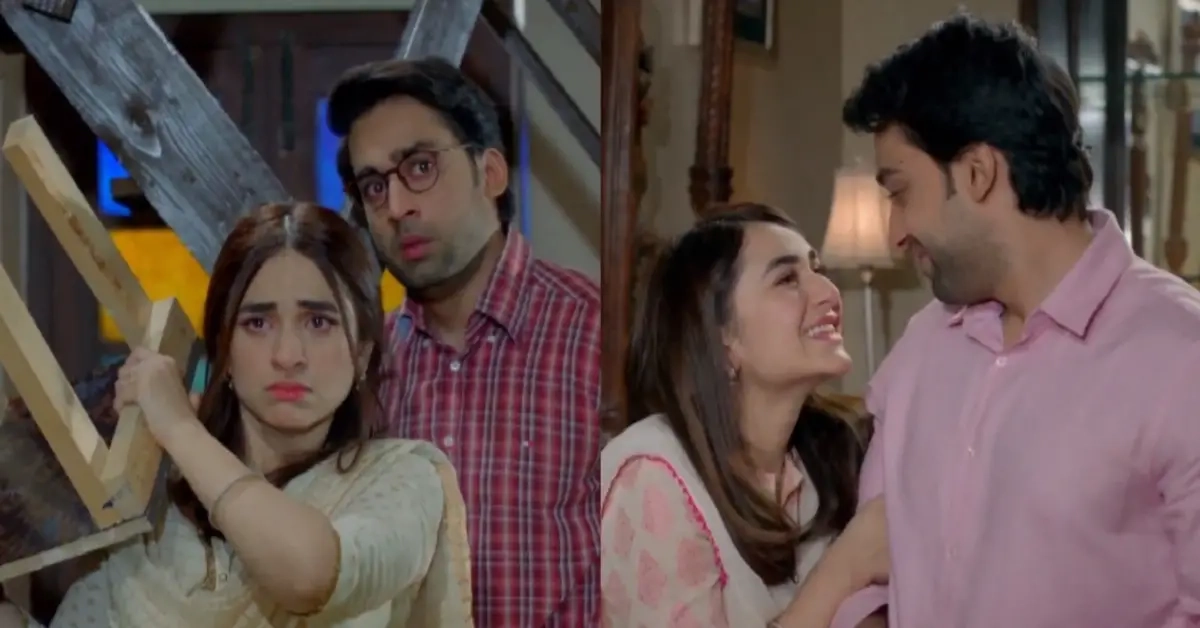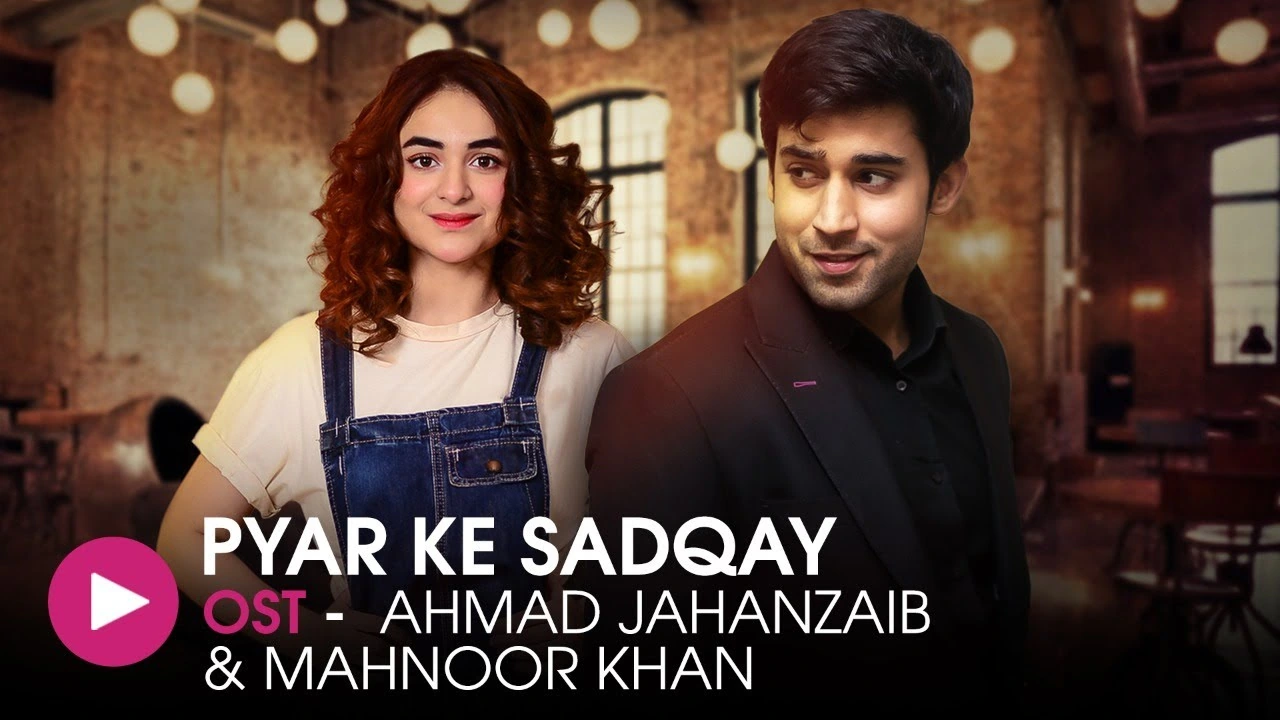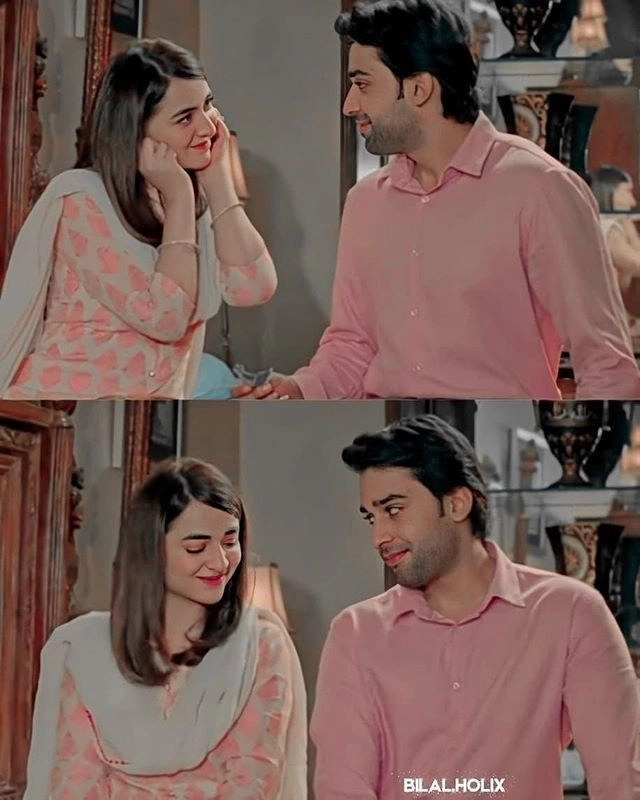Pyar Kay Sadqay Drama Review –In the vast world of Pakistani dramas, where emotional storytelling, layered characters, and societal conflicts come alive on screen, there are only a handful of productions that manage to leave an everlasting impact on audiences. One such gem is the Pyar Kay Sadqay Drama Review, a project that not only captivated viewers with its originality but also raised important conversations about innocence, love, abuse of power, and the complexities of human relationships. While many serials tread on familiar ground, this drama dared to break the mold with its refreshing characters and bold narrative. The Pyar Kay Sadqay Drama Review continues to resonate among fans, critics, and casual viewers because of its authentic storytelling, unconventional romance, and a portrayal of society’s flaws through a sensitive yet thought-provoking lens.
When audiences first tuned in, they were immediately struck by the uniqueness of its two main leads. Instead of glorifying perfection, this serial presented protagonists who were flawed, quirky, and undeniably human. In an industry often dominated by cookie-cutter love stories and glamorous portrayals of romance, the Pyar Kay Sadqay Drama Review dared to focus on innocence, awkwardness, and vulnerability. This unexpected representation gave people a chance to connect with the characters in ways they hadn’t before, making the drama stand out not only in terms of execution but also in cultural relevance.
The Pyar Kay Sadqay Drama Review also highlights how storytelling can be both entertaining and meaningful. At its heart, it is a tale of two misfits, Abdullah and Mahjabeen, whose journeys of love and self-discovery are both heartwarming and heartbreaking. Their chemistry was unlike anything the audience had seen before, relying not on superficial glamour but on genuine connection, emotions, and a shared struggle against the rigid expectations of society. This sincerity in presentation made the show deeply relatable, giving viewers the sense that they were not just watching a fictional story but witnessing real people navigating their fragile lives.
Another reason the Pyar Kay Sadqay Drama Review remains iconic is because of its bold commentary on darker issues hidden beneath the surface of family dynamics. It explores the imbalance of power in relationships, manipulation within households, and the exploitation of innocence. The antagonist character, Sarwar, was chilling in his execution, showing how predators often exist behind respectable facades. By bringing this uncomfortable truth to light, the drama earned both appreciation and criticism. Many lauded the creators for raising awareness about predatory behavior and abuse of power, while others debated the portrayal of such themes in mainstream entertainment. Regardless of where one stood, there was no denying that the Pyar Kay Sadqay Drama Review initiated a necessary dialogue within society.

Table of Contents
ToggleThe drama also succeeded because of its ability to blend emotions seamlessly. One moment, viewers would be laughing at Mahjabeen’s innocent quirks; the next, they would be tearing up at the cruelty she faced. This constant shift between humor, innocence, and tragedy created a rollercoaster of emotions that kept audiences glued to their screens week after week. It was not simply a love story—it was a mirror held up to society, forcing people to question what they often overlook in real life.
From an artistic perspective, the Pyar Kay Sadqay Drama Review excelled in its direction, screenplay, and performances. Every actor, from Bilal Abbas Khan to Yumna Zaidi, brought authenticity to their roles, ensuring the characters never felt exaggerated or out of touch. The simplicity of the script, paired with powerful dialogues, made the drama both memorable and impactful. The production team deserves recognition for trusting an unconventional storyline and giving it the platform it deserved.
Culturally, the Pyar Kay Sadqay Drama Review became a phenomenon. Social media buzzed with discussions after every episode, memes celebrated Mahjabeen’s childlike innocence, and serious debates were sparked about the issues the drama shed light on. It is rare for a serial to balance both entertainment and social commentary so successfully, but this drama achieved it with finesse.
In conclusion, the Pyar Kay Sadqay Drama Review is not just about a love story between two unusual individuals—it is about courage, resilience, and the consequences of silence in the face of injustice. It is about how society treats those who don’t fit into conventional molds and how innocence, if exploited, can turn into tragedy. As an introduction, it is safe to say that this drama goes beyond entertainment; it becomes an experience, one that lingers with viewers long after the final episode. For anyone who loves Pakistani dramas that challenge norms and leave behind lasting lessons, the Pyar Kay Sadqay Drama Review remains an essential watch.
Background Information – Pyar Kay Sadqay Drama Review
In the landscape of Pakistani television, few dramas manage to combine entertainment, social commentary, and emotional depth in a way that resonates with both critics and audiences. The Pyar Kay Sadqay Drama Review holds a special place because it didn’t just follow the formula of a romantic story; it challenged norms and brought fresh energy to the screens. To fully understand the significance of this serial, it is important to dive into its background, from the production house to the creative vision and the cultural setting in which it was released.
The Pyar Kay Sadqay Drama Review was produced by Moomal Entertainment in collaboration with MD Productions, two of the most respected names in Pakistan’s television industry. Both production houses have a reputation for bringing innovative and socially aware narratives to the forefront, and this drama was no exception. It aired on Hum TV in early 2020, a period when Pakistani television was experimenting with new storylines that broke away from the repetitive tropes of family politics and clichéd romances. The timing was crucial because viewers were hungry for originality, and this drama fulfilled that demand by offering something refreshingly different.
The writer, Zanjabeel Asim Shah, deserves special credit for crafting a story that balanced innocence with darkness. Her script for the Pyar Kay Sadqay Drama Review did not shy away from uncomfortable realities, such as manipulation, abuse of trust, and societal prejudice. At the same time, she managed to inject humor, sweetness, and purity into the characters of Mahjabeen and Abdullah, making them lovable and relatable. Zanjabeel’s writing has often been known for its sensitivity toward social issues, but here, she outdid herself by blending complex themes with accessible storytelling.
Direction played an equally vital role in shaping the Pyar Kay Sadqay Drama Review. Directed by Farooq Rind, who is known for his unique style and flair for presenting layered emotions, the drama carried his signature touch. His ability to highlight even the smallest gestures—such as a nervous glance, an awkward silence, or an innocent smile—added depth to the characters and their interactions. Farooq Rind has always been a director who prioritizes emotional realism over melodrama, and this philosophy shone brightly in this drama. His vision ensured that the story never lost its grounding, even when tackling heavy themes.
The casting was another masterstroke that contributed to the success of the Pyar Kay Sadqay Drama Review. Yumna Zaidi, playing Mahjabeen, delivered one of her career-defining performances. Her portrayal of a young woman with a childlike innocence, coupled with her struggles in a judgmental society, was heart-touching and powerful. Bilal Abbas Khan, as Abdullah, brought nuance to his character—a shy, submissive man torn between his personal struggles and societal pressures. Together, their chemistry redefined on-screen romance, proving that love stories don’t always have to follow predictable paths to connect with audiences.
Behind the screen, the drama’s soundtrack also played a vital role in cementing its identity. The OST of the Pyar Kay Sadqay Drama Review, sung beautifully by Ahmed Jahanzaib and Mahnoor Khan, captured the essence of the show—innocence, longing, and heartbreak. The lyrics and melody blended perfectly with the narrative, ensuring that every time the OST played, it heightened the emotional impact of the scenes. The OST wasn’t just a background element; it became an integral part of the viewing experience, staying with the audience long after the episodes ended.
When discussing the background, one cannot ignore the cultural climate in which the Pyar Kay Sadqay Drama Review was released. Pakistani society is layered with contradictions, where issues like power imbalances, gender roles, and exploitation are often silenced within families. By addressing these themes openly, the drama dared to spark conversations that many were hesitant to have. Its portrayal of a predatory stepfather figure was bold, controversial, and unsettling, but it was also necessary to expose the dangers lurking within seemingly respectable households. At the same time, the drama offered hope and resilience through its protagonists, showing how innocence and purity of heart can survive even in the harshest conditions.

Critics and audiences alike praised the Pyar Kay Sadqay Drama Review for being different yet engaging. It wasn’t just another love story but rather an exploration of how two unconventional people, both misunderstood in their own ways, find strength in each other. The show became a cultural milestone, sparking debates on social media and in households across the country. Its balance of light-hearted humor, emotional depth, and societal critique made it stand out as a drama that wasn’t afraid to push boundaries.
In summary, the Pyar Kay Sadqay Drama Review owes its impact to its strong background—visionary writing by Zanjabeel Asim Shah, masterful direction by Farooq Rind, powerhouse performances by Yumna Zaidi and Bilal Abbas Khan, and the unwavering support of production houses willing to take risks. Coupled with its timing, cultural relevance, and unforgettable soundtrack, the background of this drama ensured its place in the golden list of Pakistani television. It became more than just a story; it became a representation of how dramas can shape conversations, challenge norms, and still entertain with sincerity.
Plot Summary – Pyar Kay Sadqay Drama Review
The Pyar Kay Sadqay Drama Review unfolds as a story that is both tender and unsettling, weaving together innocence, vulnerability, and the darker undercurrents of manipulation and exploitation. At its core, it tells the journey of two misfits—Mahjabeen and Abdullah—who do not fit into the conventional molds that society often imposes. Their story is not the typical glamorous love tale; instead, it is about awkwardness, purity, resilience, and the fight to protect one’s identity in a world that often exploits weakness.
The drama begins by introducing Mahjabeen, played with charm and conviction by Yumna Zaidi. Mahjabeen is a young woman who sees life through the lens of innocence and naivety. Her childlike behavior, lack of worldly experience, and quirky outlook on life set her apart from others. She is often laughed at, ridiculed, and misunderstood, even by those close to her. Yet, it is this very innocence that endears her to audiences, making her one of the most unforgettable characters in Pakistani television.
On the other side, we meet Abdullah, portrayed brilliantly by Bilal Abbas Khan. Abdullah is a shy, introverted man overshadowed by his authoritarian stepfather, Sarwar, and the pressures of an overbearing household. Though academically gifted, Abdullah struggles with self-confidence, unable to stand up for himself or make independent choices. His quiet nature and submissiveness make him an easy target for manipulation. The Pyar Kay Sadqay Drama Review carefully builds his character arc, showing how his vulnerabilities are both his greatest weakness and his hidden strength.
The story takes a turn when Mahjabeen and Abdullah cross paths. Their relationship, at first, appears improbable—two oddballs, each carrying their own baggage, trying to navigate life. However, their awkward conversations, endearing innocence, and genuine connection gradually blossom into an unconventional love story. Unlike mainstream dramas, which often glamorize romance, this show portrays love as something pure and unfiltered, built on honesty rather than perfection. The Pyar Kay Sadqay Drama Review excels in showing how two flawed individuals can find comfort and safety in each other’s presence.
While the love story is central, the drama also introduces its most chilling element: Sarwar, Abdullah’s manipulative stepfather. Played by Omair Rana with unnerving precision, Sarwar is the antagonist whose charming facade hides predatory tendencies. His obsession with Mahjabeen and his attempts to control Abdullah’s life create a disturbing tension throughout the drama. Sarwar’s character is a reminder of how power, respectability, and manipulation can coexist dangerously within family structures. His predatory behavior becomes the central conflict, shaping the narrative and forcing the audience to confront uncomfortable realities.
The supporting characters in the Pyar Kay Sadqay Drama Review add further depth. Abdullah’s mother, Mansoora (played by Atiqa Odho), is caught between love for her son and loyalty to her husband. Her inability to recognize Sarwar’s true nature until much later reflects how denial and silence often perpetuate abuse. Shanzay, Abdullah’s initial love interest, represents the shallow expectations of society—choosing status and appearance over genuine connection. Each character plays a role in shaping the trajectory of Mahjabeen and Abdullah’s relationship, either challenging it or strengthening it.
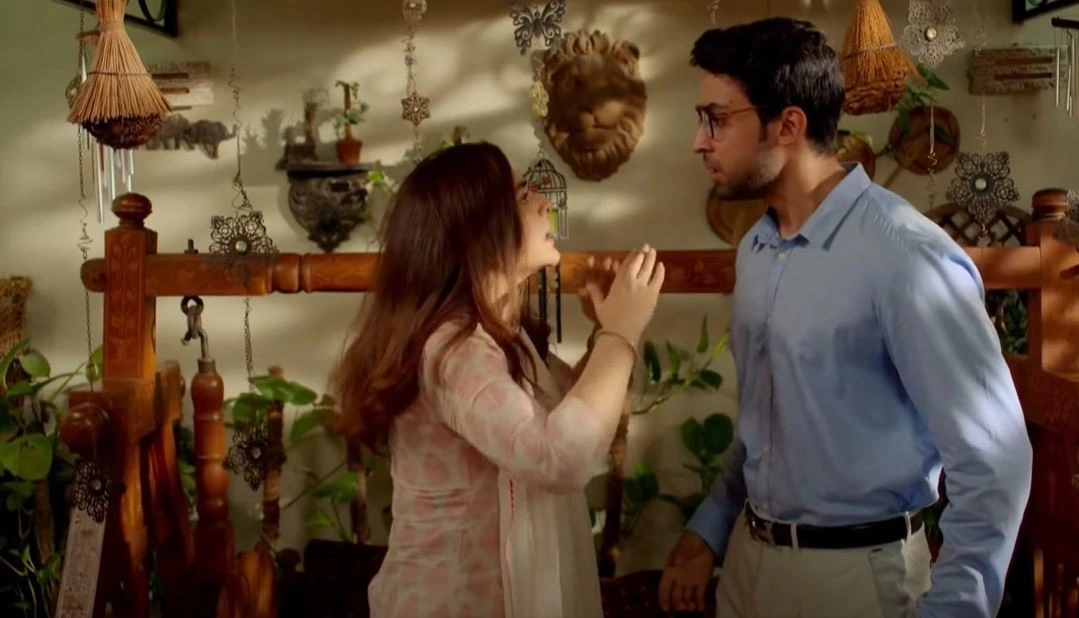
As the plot unfolds, the love story between Mahjabeen and Abdullah is constantly tested. Sarwar’s manipulations grow darker, creating moments of unbearable tension. Abdullah’s journey from submission to self-realization becomes one of the most powerful aspects of the drama. He must learn to confront his fears, break free from his stepfather’s grip, and embrace the strength within him. Similarly, Mahjabeen’s transformation is both painful and inspiring, as she evolves from a misunderstood girl into a woman capable of recognizing her worth.
The pacing of the story ensures that audiences remain hooked from the first episode to the last. Each episode ends with a cliffhanger or an emotional twist, making viewers eager for the next development. The Pyar Kay Sadqay Drama Review never relies on filler content; instead, every scene serves to push the narrative forward, whether through humor, romance, or tension. This balance of emotions—laughter, heartbreak, suspense—keeps the drama engaging without ever feeling monotonous.
In its conclusion, the drama delivers a resolution that is both satisfying and heartbreaking. Justice is served, but not without loss. Sarwar’s true face is exposed, Abdullah finds his voice, and Mahjabeen learns to embrace her individuality. Yet, the scars of their journey remain, reminding the audience that innocence, once exploited, can never fully return to its untouched form. The ending is a reflection of reality: life is messy, love is complicated, and not all wounds heal perfectly.
To sum it up, the Pyar Kay Sadqay Drama Review offers a plot that is layered, emotional, and thought-provoking. It moves beyond clichés, presenting a love story that is refreshingly raw and real, while also confronting the darker aspects of family and society. From the innocence of Mahjabeen to the growth of Abdullah and the menace of Sarwar, every element contributes to a narrative that lingers long after the final credits roll.
Character Analysis – Pyar Kay Sadqay Drama Review
A drama is only as strong as its characters, and one of the biggest reasons behind the success of the Pyar Kay Sadqay Drama Review lies in its unforgettable character portrayals. Each role, whether central or supporting, was layered with complexities that reflected real human struggles. The characters were not painted in black and white; instead, they embodied shades of gray that allowed viewers to connect, debate, and reflect on their own lives. Let’s take a closer look at the most impactful characters and the performances that brought them to life.
Mahjabeen – The Innocent Misfit
At the heart of the Pyar Kay Sadqay Drama Review is Mahjabeen, played by the exceptionally talented Yumna Zaidi. Mahjabeen is unlike any female lead audiences had seen before. She is quirky, naïve, and emotionally childlike, often misunderstood by those around her. Her innocence, rather than being celebrated, becomes a reason for others to ridicule her. Yet, Mahjabeen’s simplicity is also her strength—she loves without conditions, forgives easily, and sees the world through uncorrupted eyes. Yumna Zaidi’s performance elevated Mahjabeen into a cultural phenomenon. Her ability to switch between comedic innocence and heartbreaking vulnerability made Mahjabeen a character who remains etched in memory long after the drama ended.
Abdullah – The Gentle Soul in Conflict
Bilal Abbas Khan brought Abdullah to life in a way that showcased the struggles of many men trapped in controlling households. Abdullah is shy, introverted, and burdened by his stepfather’s authority. His intelligence and kind nature are overshadowed by his inability to take a stand. The Pyar Kay Sadqay Drama Review traces Abdullah’s growth from a submissive young man into someone capable of confronting injustice. What made Abdullah so compelling was his relatability—viewers saw in him the pain of those who live in silence, manipulated by those more powerful. Bilal Abbas’s nuanced performance turned Abdullah into a symbol of quiet strength and resilience.
Sarwar – The Charming Villain
Every unforgettable drama needs a memorable antagonist, and in this case, Omair Rana’s portrayal of Sarwar was chilling. On the surface, Sarwar is a respectable, charismatic man who commands authority within the household. Beneath this façade, however, lies a manipulative predator obsessed with control and desire. His unhealthy fixation on Mahjabeen and his toxic influence over Abdullah create the core conflict of the Pyar Kay Sadqay Drama Review. Omair Rana played Sarwar with unnerving realism—his calm demeanor and subtle gestures made him even scarier than an over-the-top villain. He reminded audiences that predators often hide in plain sight, disguised as trusted figures.

Mansoora – The Conflicted Mother
Atiqa Odho’s character, Mansoora, adds another layer of complexity. She is Abdullah’s mother, a woman torn between protecting her son and maintaining loyalty to her husband, Sarwar. Her inability to recognize the dangers of her marriage until it is too late reflects the struggles of many women caught in toxic relationships. Mansoora represents the silence and denial that often allow abuse to continue unchecked. In the Pyar Kay Sadqay Drama Review, her eventual awakening is powerful, but it also raises uncomfortable questions about how much damage silence can cause.
Shanzay – The Symbol of Superficiality
Shanzay, played by Srha Asghar, serves as a foil to Mahjabeen. She is beautiful, modern, and confident, yet her choices reveal a superficial outlook on relationships. Initially, Abdullah is infatuated with her, but Shanzay’s decision to reject him for someone with greater status highlights the shallow judgments prevalent in society. In the Pyar Kay Sadqay Drama Review, Shanzay’s character demonstrates how love is often measured against wealth, power, and appearances rather than genuine connection.
Supporting Cast – Adding Depth
The drama also features several supporting characters who add texture to the narrative. Mahjabeen’s parents, though protective, fail to fully understand her innocence. Abdullah’s friends and relatives further highlight his struggles by either mocking him or ignoring his pain. Each supporting character, no matter how small, contributes to building the world of the drama, ensuring that the main characters’ journeys feel authentic.
Chemistry Between the Leads
One of the standout elements of the Pyar Kay Sadqay Drama Review is the chemistry between Yumna Zaidi and Bilal Abbas Khan. Their pairing was unusual, yet perfectly fitting. Their awkward conversations, innocent laughter, and unspoken understanding created a romance that felt real rather than forced. Instead of relying on dramatic gestures, their bond grew through vulnerability and trust. This natural chemistry made the love story believable and emotionally impactful.
Performances That Elevated the Script
What made these characters memorable was not just the way they were written but also the way they were performed. The Pyar Kay Sadqay Drama Review benefitted from a cast that fully immersed themselves in their roles. Yumna Zaidi’s comic timing and emotional depth, Bilal Abbas’s subtle body language, Omair Rana’s unnerving calmness, and Atiqa Odho’s conflicted expressions turned the drama into a masterclass in acting. These performances ensured that the characters never felt one-dimensional.
In conclusion, the Pyar Kay Sadqay Drama Review thrives because of its characters. Each one, from Mahjabeen’s innocence to Abdullah’s growth and Sarwar’s darkness, adds meaning to the story. The interplay between them creates a world that feels lived-in, layered, and deeply human. These characters do not just exist within the confines of a drama—they reflect the complexities, struggles, and resilience found in real life. It is this authenticity that makes the drama timeless.
OST Credits
The OST (Original Soundtrack) of the Pyar Kay Sadqay Drama Review became one of its strongest assets. Music in Pakistani dramas often plays a key role in heightening emotions, and in this case, the OST was nothing short of magical.
Here’s a detailed breakdown of the OST credits:
| OST Details | Information |
|---|---|
| Title | Pyar Kay Sadqay OST |
| Singers | Ahmad Jahanzaib & Mahnoor Khan |
| Lyrics | Ahmad Jahanzaib |
| Composer | Ahmad Jahanzaib |
| Music Label | HUM TV Official |
| Release Year | 2020 |
The OST quickly became a fan favorite, not just because of its melody but because of how perfectly it captured the emotional essence of the drama. The voices of Ahmad Jahanzaib and Mahnoor Khan added a soulful depth to the soundtrack, making it hauntingly beautiful. The lyrics reflected innocence, longing, and heartbreak—themes that were central to the Pyar Kay Sadqay Drama Review.
Whenever the OST played during emotional or turning points in the drama, it amplified the audience’s experience, ensuring that the scenes left a lasting impression. In fact, many fans admitted that just hearing the OST would bring back memories of Mahjabeen and Abdullah’s journey, a testament to its impact.
Cultural Impact of the OST
The OST wasn’t just background music—it became a cultural sensation. Fans shared it on social media, created covers, and used it in tribute videos celebrating Mahjabeen and Abdullah’s love story. The soundtrack’s widespread popularity even reached audiences who hadn’t watched the show, drawing them in through its haunting charm.
In Pakistani dramas, OSTs often outlive the dramas themselves, and in this case, the Pyar Kay Sadqay Drama Review OST became a timeless addition to the list of unforgettable soundtracks. Its emotional pull was strong enough to make it a standalone success while also being inseparably tied to the story.
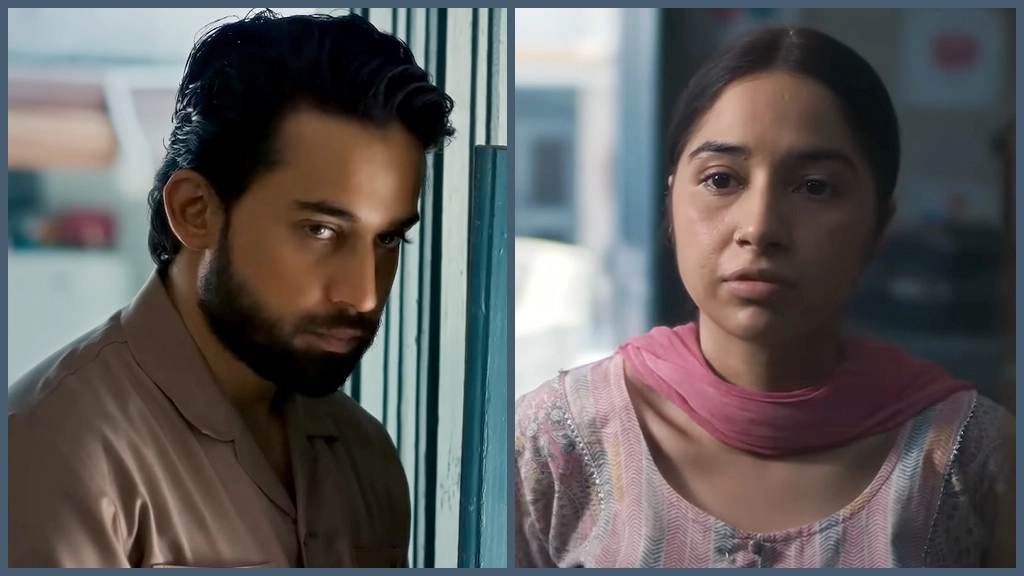
Importance of Drama Info & OST
Understanding the drama’s production background and OST gives us insight into why the Pyar Kay Sadqay Drama Review remains so special. The creative synergy between the writer, director, and actors made the drama powerful, while the OST ensured it stayed etched in the hearts of viewers. Together, they created an experience that transcended episodic storytelling and became a cultural milestone.
For viewers, these elements turned the drama into more than just entertainment. It became an emotional journey, supported by an unforgettable soundtrack that continues to be cherished years later.
Cast Name and Role – Pyar Kay Sadqay Drama Review
One of the defining strengths of the Pyar Kay Sadqay Drama Review lies in its stellar cast. Each actor, whether playing a lead or supporting role, gave their character depth and authenticity, ensuring the drama resonated deeply with audiences. The casting choices were both bold and refreshing, bringing together seasoned performers and rising stars to deliver an unforgettable viewing experience. Let’s explore the cast and their roles in detail.
Yumna Zaidi as Mahjabeen
At the center of the story is Mahjabeen, played by the incomparable Yumna Zaidi. Known for her versatility and ability to fully inhabit her roles, Yumna delivered one of her career’s most iconic performances in this drama. Mahjabeen is quirky, innocent, and childlike in her approach to life. She is often ridiculed for her naïveté, yet her purity of heart makes her stand out.
Yumna Zaidi’s portrayal of Mahjabeen was nothing short of extraordinary. From her wide-eyed innocence to her awkward body language, every detail felt genuine. Viewers laughed with her, cried with her, and rooted for her throughout the narrative. The character could easily have slipped into caricature, but Yumna ensured Mahjabeen remained relatable and human. In the Pyar Kay Sadqay Drama Review, she became the emotional soul of the story.
Bilal Abbas Khan as Abdullah
Bilal Abbas Khan took on the challenging role of Abdullah, a character caught between innocence and oppression. Abdullah is shy, submissive, and academically gifted, yet he lacks the confidence to make independent decisions. He is constantly overshadowed by his manipulative stepfather, Sarwar, and struggles to find his own voice.
Bilal Abbas brought subtlety and depth to Abdullah. His hesitant body language, nervous glances, and emotional breakdowns were portrayed with such authenticity that viewers couldn’t help but sympathize with him. The transformation of Abdullah—from a timid young man into someone capable of standing up for himself—was one of the most satisfying arcs in the Pyar Kay Sadqay Drama Review.
Omair Rana as Sarwar
Every great drama needs a compelling antagonist, and in this case, Omair Rana delivered a chilling performance as Sarwar. Sarwar is Abdullah’s stepfather, a man who hides his predatory nature behind charm and authority. His obsession with Mahjabeen and his manipulation of Abdullah create the central conflict of the drama.
Omair Rana played Sarwar with unsettling calmness. He didn’t need loud threats or over-the-top villainy; his subtle smirks and composed demeanor were enough to make viewers feel uneasy. By portraying Sarwar as a predator hiding in plain sight, the Pyar Kay Sadqay Drama Review highlighted a harsh social reality—that abusers often disguise themselves as respectable figures.
Atiqa Odho as Mansoora
The role of Mansoora, Abdullah’s mother, was played by the legendary Atiqa Odho. Mansoora is a complex character—loving toward her son but blind to the toxicity of her marriage. She represents the many women in society who, out of fear or denial, fail to recognize the abuse happening in their own homes.
Atiqa Odho brought gravitas to this role. Her controlled performance reflected a woman torn between her maternal instincts and her misplaced loyalty to her husband. When she eventually realizes Sarwar’s true nature, her heartbreak and guilt hit the audience hard. In the Pyar Kay Sadqay Drama Review, Mansoora serves as a cautionary figure, reminding us of the dangers of silence.
Srha Asghar as Shanzay
Srha Asghar played Shanzay, Abdullah’s initial love interest. Beautiful, confident, and socially aware, Shanzay is everything Mahjabeen is not. However, her shallow approach to relationships is revealed when she rejects Abdullah for someone with higher social standing.
Through Shanzay, the drama highlighted society’s obsession with status, wealth, and appearances. Srha Asghar performed the role with just the right amount of charm and arrogance, ensuring Shanzay felt realistic rather than one-dimensional. Her presence in the Pyar Kay Sadqay Drama Review served as a contrast to Mahjabeen’s purity, making Abdullah’s eventual bond with Mahjabeen even more meaningful.

Supporting Cast
The supporting cast added richness to the drama’s world:
-
Khalid Malik as Washma, Abdullah’s sibling, who often challenged his decisions.
-
Gul-e-Rana as Mahjabeen’s mother, protective yet unable to fully guide her daughter.
-
Sharmeen Ali and other side characters, who played family members and friends, reflecting the larger societal attitudes toward Mahjabeen and Abdullah.
Each supporting role may have been smaller, but collectively, they enhanced the realism of the narrative. The Pyar Kay Sadqay Drama Review would not have been as impactful without their contributions.
Chemistry Among the Cast
One of the standout features of this drama was the chemistry among the cast. Whether it was the uncomfortable tension between Abdullah and Sarwar, the innocent laughter shared by Mahjabeen and Abdullah, or the heartbreaking confrontations between Mansoora and her son, every interaction felt authentic. The ensemble cast worked together seamlessly, creating a world that was both believable and emotionally gripping.
In conclusion, the Pyar Kay Sadqay Drama Review owes much of its success to its cast. Yumna Zaidi and Bilal Abbas Khan redefined on-screen chemistry, Omair Rana delivered a villain audiences loved to hate, and Atiqa Odho added emotional weight with her layered performance. Combined with the efforts of Srha Asghar and the supporting cast, the performances elevated the drama from a simple love story into an unforgettable social commentary. The cast didn’t just play roles—they breathed life into characters who continue to live on in the hearts of viewers.
Themes and Messages – Pyar Kay Sadqay Drama Review
The strength of the Pyar Kay Sadqay Drama Review lies not only in its story and performances but also in the powerful themes and messages it weaves into the narrative. Unlike conventional dramas that focus solely on love triangles or family politics, this serial dared to explore deeper issues that reflect the complexities of society. It forced audiences to think, question, and reflect on matters often brushed under the carpet. Let’s explore the major themes and messages that make this drama timeless.
Innocence vs. Exploitation
At the heart of the Pyar Kay Sadqay Drama Review is the contrast between innocence and exploitation. Mahjabeen’s childlike simplicity and Abdullah’s submissiveness highlight how society often mocks or sidelines those who don’t conform to its rigid expectations. Their purity of heart becomes their vulnerability, making them easy targets for ridicule and manipulation. On the other hand, Sarwar’s predatory behavior represents exploitation at its worst. Through this juxtaposition, the drama sends a strong message: innocence should be protected and cherished, not taken advantage of.
Love Beyond Perfection
Another central theme of the Pyar Kay Sadqay Drama Review is that love does not require perfection. In a society obsessed with beauty, wealth, and status, the relationship between Mahjabeen and Abdullah stands out as refreshingly unconventional. Neither fits the typical definition of a “hero” or “heroine,” yet their love story becomes deeply inspiring. Their bond is built on honesty, acceptance, and vulnerability, proving that real love thrives not in perfection but in embracing flaws. The message is clear: true relationships are about connection, not conformity.
Abuse of Power and Silence
The drama bravely addresses the issue of abuse of power within families. Sarwar’s manipulative control over Abdullah and his predatory obsession with Mahjabeen expose a dark truth about how abusers often operate under the guise of respectability. Equally significant is the silence of characters like Mansoora, who, despite being aware of Sarwar’s dominance, fails to act until the damage is done. The Pyar Kay Sadqay Drama Review highlights how silence, denial, and misplaced loyalty allow abuse to persist. This message resonates strongly in societies where family reputation is often prioritized over individual safety.
Social Judgment and Stigma
Through Mahjabeen, the drama reflects how society treats those who are different. Her innocence, which should have been a cause for empathy, becomes a source of ridicule. Similarly, Abdullah’s timidity makes him a target of mockery. The Pyar Kay Sadqay Drama Review delivers an important message about the dangers of labeling, judgment, and stigma. It challenges viewers to rethink how they treat individuals who don’t fit neatly into societal molds.
The Complexity of Family Dynamics
Another recurring theme is the complexity of relationships within families. Abdullah’s strained relationship with his stepfather, his mother’s conflicted loyalty, and Mahjabeen’s struggle to find acceptance all highlight the emotional struggles within households. The drama portrays families not as perfect units but as spaces filled with love, power struggles, silence, and betrayal. The Pyar Kay Sadqay Drama Review suggests that healing within families requires honesty, communication, and the courage to confront uncomfortable truths.
Hope and Resilience
Despite its dark themes, the drama is not devoid of hope. Mahjabeen and Abdullah’s journey symbolizes resilience. Even after enduring humiliation, manipulation, and heartbreak, they manage to find strength in each other. Their love story becomes a beacon of hope, proving that innocence, when nurtured, can survive even the harshest trials. The message here is uplifting: no matter how broken the world may seem, compassion and resilience can carve a path forward.

The Importance of Self-Discovery
Abdullah’s arc, in particular, emphasizes the importance of self-discovery. His growth from a timid, submissive man into someone capable of standing up for himself is one of the most empowering aspects of the drama. Similarly, Mahjabeen evolves from a misunderstood girl into a woman who learns to value her own worth. The Pyar Kay Sadqay Drama Review encourages viewers to embrace their individuality, confront their fears, and trust in their own strength.
Breaking Taboos in Storytelling
Finally, the drama sends a message about the power of bold storytelling. By addressing taboo subjects like predatory behavior within families, it challenges the culture of silence in Pakistani society. The Pyar Kay Sadqay Drama Review proves that television can be more than just entertainment—it can be a mirror that reflects uncomfortable truths and sparks much-needed conversations.
Conclusion of Themes
The themes and messages of the Pyar Kay Sadqay Drama Review are what make it stand out among countless other dramas. It is not just a story of two people finding love; it is a narrative about innocence, exploitation, abuse of power, resilience, and the courage to defy societal norms. By blending emotional depth with social commentary, the drama managed to entertain while also educating. The result is a masterpiece that continues to resonate with audiences long after its final episode.
Greed and Its Consequences – Pyar Kay Sadqay Drama Review
The beauty of the Pyar Kay Sadqay Drama Review lies in the way it intertwines universal themes such as loyalty, betrayal, justice, and greed with human emotions and societal structures. These elements do not appear in isolation; they are intricately woven into the lives of Mahjabeen, Abdullah, and the supporting characters, offering viewers not just entertainment but also lessons about morality, relationships, and the cost of choices.
Loyalty as Strength and Weakness
Loyalty is one of the most significant themes of the Pyar Kay Sadqay Drama Review. Abdullah’s loyalty to his stepfather Sarwar initially appears admirable but soon reveals itself as his greatest weakness. His blind trust makes him vulnerable to manipulation, preventing him from seeing the predator lurking behind Sarwar’s respectable facade. Similarly, Mahjabeen’s loyalty to the people around her, despite being ridiculed, highlights her purity but also leaves her open to exploitation. The drama teaches that while loyalty is an essential human value, it must be balanced with self-awareness and wisdom.
The Pain of Betrayal
Betrayal plays a central role in shaping the narrative. Abdullah feels betrayed not only by Sarwar’s manipulations but also by his mother Mansoora, whose silence and misplaced faith in her husband allow abuse to flourish. For Mahjabeen, betrayal comes in the form of societal rejection—friends and family who fail to protect her when she needs them most. The Pyar Kay Sadqay Drama Review reminds viewers that betrayal cuts deepest when it comes from those closest to us, making trust both a fragile and invaluable asset in relationships.
Justice Delayed but Not Denied
The drama also grapples with the concept of justice. For much of the story, it seems as though Sarwar’s evil schemes will go unchecked, with his wealth, charm, and power shielding him from consequences. However, as the plot unfolds, the truth begins to surface, and justice is eventually served. This delayed but inevitable reckoning reinforces the idea that while evil may thrive temporarily, it cannot escape the moral order of the universe. The Pyar Kay Sadqay Drama Review effectively portrays justice as slow but unstoppable, offering hope to those who suffer silently.
Greed as a Corrupting Force
Sarwar’s character embodies greed in its most dangerous form. His obsession with controlling Abdullah’s wealth and his desire to possess Mahjabeen reveal how greed can strip away humanity and morality. He is not driven by love or compassion but by a selfish hunger for power and dominance. This theme resonates strongly in societies where greed often leads to corruption, exploitation, and betrayal. Through Sarwar, the Pyar Kay Sadqay Drama Review warns of the destructive consequences greed brings, not just to individuals but to entire families.
Consequences of Human Choices
Every choice in the drama carries weighty consequences. Abdullah’s initial submission to Sarwar’s authority delays his growth as an individual. Mansoora’s silence prolongs the suffering within her household. Sarwar’s greed leads to his downfall. Even Mahjabeen’s innocence forces her to endure ridicule until she learns to value her own worth. The Pyar Kay Sadqay Drama Review underscores the idea that life is shaped by the choices we make, and those choices, whether grounded in loyalty, betrayal, or greed, inevitably bring consequences—good or bad.
Moral Lessons for Society
By portraying these themes, the drama becomes more than just a love story. It acts as a cautionary tale about the dangers of blind loyalty, the devastation caused by betrayal, and the inevitability of justice. Viewers are encouraged to question their own actions: Are they loyal to the right people? Do they remain silent in the face of injustice? Are they driven by greed or compassion? The Pyar Kay Sadqay Drama Review invites audiences to reflect on their values and the ripple effects their decisions create in the lives of others.
The Triumph of Good Over Evil
In the end, the drama reinforces a timeless truth: good may suffer, but evil never wins. Sarwar’s greed and betrayal ultimately destroy him, while Mahjabeen and Abdullah’s resilience and sincerity lead them toward peace. This conclusion aligns with the moral compass audiences seek in storytelling. The Pyar Kay Sadqay Drama Review proves that loyalty, when directed wisely, can heal relationships, while justice ensures that truth and goodness prevail.
Family Dynamics – Pyar Kay Sadqay Drama Review
Family plays a central role in the Pyar Kay Sadqay Drama Review, shaping not only the lives of Abdullah and Mahjabeen but also the trajectory of the entire narrative. The drama skillfully explores how family dynamics can act as both a source of strength and a breeding ground for toxicity. From parental authority and sibling bonds to generational trauma and misplaced trust, the serial lays bare the complexities of family relationships in South Asian society.
Parental Authority and Control
At the heart of the family dynamics in the Pyar Kay Sadqay Drama Review lies the tension between parental authority and individual freedom. Abdullah’s life is controlled by Sarwar, his stepfather, who exploits his position to manipulate both Abdullah and Mansoora. Rather than guiding him with love, Sarwar imposes his will, leaving Abdullah too submissive to make his own decisions. This authoritarian presence highlights how parental control, when abused, can stunt personal growth and create lasting emotional scars.
The Role of Mothers
Mansoora’s character illustrates the struggles mothers face in dysfunctional family setups. Her silence, rooted in fear of losing her marital stability, perpetuates the toxicity in her household. Though she loves her son, her inability to protect him from Sarwar makes her complicit in the emotional abuse. In contrast, Mahjabeen’s mother is shown as supportive yet unable to protect her daughter from societal ridicule. Through these portrayals, the Pyar Kay Sadqay Drama Review captures the emotional burden mothers bear and the impact their choices have on their children.
Step-Parent Relationships
The drama offers an insightful exploration of step-parent relationships. Sarwar’s role as Abdullah’s stepfather is one of exploitation and manipulation, showing how step-relations can become destructive when driven by greed rather than care. His actions reinforce the stereotype of a “wicked step-parent,” but they also serve as a critique of families that fail to establish healthy boundaries. The Pyar Kay Sadqay Drama Review demonstrates how unresolved resentment and lack of trust can poison the foundation of blended families.
Sibling Bonds and Rivalries
While the drama primarily focuses on parental figures, it also touches upon sibling relationships. Abdullah, often isolated, lacks the emotional security a sibling bond could provide. Mahjabeen, too, is shown as lonely, navigating ridicule without strong sibling support. This absence emphasizes the importance of siblings in providing solidarity against external pressures. The Pyar Kay Sadqay Drama Review subtly critiques families where rivalry, neglect, or absence of supportive siblings leaves individuals vulnerable to manipulation.
Marriage as a Family Institution
Marriage, another form of family dynamic, is central to the drama. Mahjabeen and Abdullah’s union begins as a relationship of convenience rather than love, but it gradually becomes a journey of growth and resilience. Their bond represents the struggles young couples face when family interference, societal pressure, and personal immaturity collide. On the other hand, Sarwar and Mansoora’s marriage is shown as toxic, built on exploitation rather than partnership. The Pyar Kay Sadqay Drama Review contrasts these unions to highlight how marriages can either nurture or destroy individuals.
Generational Trauma
The drama also delves into generational trauma, where the decisions of one generation deeply impact the next. Sarwar’s greed and Mansoora’s silence burden Abdullah with insecurities, while Mahjabeen inherits the ridicule her family tolerates. These patterns illustrate how unresolved conflicts pass from parents to children, creating cycles of dysfunction. The Pyar Kay Sadqay Drama Review underscores the importance of breaking these cycles through courage, awareness, and resilience.
Family as a Source of Strength
Despite its portrayal of dysfunction, the drama also shows how family can be a source of healing. Abdullah and Mahjabeen eventually find strength in each other, building a supportive environment where love and respect replace ridicule and control. Their growth demonstrates that while toxic family dynamics can cause deep wounds, nurturing bonds have the power to heal. The Pyar Kay Sadqay Drama Review beautifully illustrates that family is not defined only by blood but also by love, trust, and mutual respect.
Cultural Reflection
The family dynamics in the drama reflect broader South Asian cultural realities, where children are often expected to obey authority figures without question, and women are pressured to maintain household peace at the cost of their own well-being. By exposing these issues, the Pyar Kay Sadqay Drama Review holds a mirror to society, encouraging viewers to rethink outdated traditions and create healthier family environments.
Direction and Cinematography – Pyar Kay Sadqay Drama Review
The brilliance of the Pyar Kay Sadqay Drama Review does not solely rest on its powerful script and stellar performances but also on the meticulous direction and cinematography that elevate the storytelling. Under the direction of Farooq Rind, the drama becomes more than just a narrative; it transforms into a deeply immersive experience where visuals, camera movements, and symbolic frames amplify the emotions of the characters. The interplay of light, color, and perspective makes each episode feel like a carefully painted canvas, designed to evoke empathy and thought.
Farooq Rind’s Directional Excellence
Farooq Rind has long been celebrated for his ability to handle sensitive subjects with subtlety, and in the Pyar Kay Sadqay Drama Review, his skills shine at their best. He crafts each scene with precision, allowing the characters to breathe and their emotions to resonate with the audience. Rather than rushing through the plot, he takes his time, giving viewers space to understand Mahjabeen’s innocence and Abdullah’s struggles. This slower pacing reflects his directorial philosophy: to let human emotions dictate the rhythm of the story instead of forcing artificial speed.
Use of Symbolism
One of the hallmarks of the Pyar Kay Sadqay Drama Review lies in its symbolic cinematography. For example, the frequent use of windows and doors in scenes symbolizes both confinement and the possibility of escape. Similarly, mirrors often reflect the characters’ internal struggles, particularly Abdullah’s lack of confidence and Mahjabeen’s innocence. These subtle choices enrich the narrative, allowing viewers to interpret layers of meaning beyond dialogue. Farooq Rind ensures that nothing is accidental; every frame contributes to the larger thematic tapestry of the story.
Lighting and Color Palette
Lighting plays a vital role in setting the mood throughout the Pyar Kay Sadqay Drama Review. Bright, warm tones often accompany Mahjabeen, underlining her purity and childlike spirit, while darker tones dominate Sarwar’s presence, signifying manipulation and control. The shift in lighting when Abdullah begins asserting himself reflects his emotional journey from darkness toward self-realization. This thoughtful use of color and light enhances the emotional impact, drawing viewers deeper into the psychological states of the characters.
Camera Work and Angles
The camera work in the Pyar Kay Sadqay Drama Review deserves special praise for how it complements character development. Close-up shots are frequently used to capture the subtle shifts in Mahjabeen’s expressions, from innocence to heartbreak, making her vulnerability more palpable. Low-angle shots of Sarwar emphasize his dominance and predatory presence, while medium shots of Abdullah highlight his hesitance and awkwardness in social interactions. These deliberate choices ensure that viewers not only follow the story but also emotionally experience it through the lens.
Set Design and Realism
The set design reflects the socio-economic backdrop of the characters in the Pyar Kay Sadqay Drama Review. Mahjabeen’s modest home, with its unpretentious furniture and bright colors, contrasts starkly with Sarwar and Mansoora’s more polished environment. This visual contrast highlights the class differences while grounding the drama in relatable realism. By choosing authentic locations and realistic interiors, the direction avoids artificial glossiness and instead embraces authenticity, making the narrative more believable.
Pacing Through Cinematic Choices
While the script naturally leans towards emotional intensity, the pacing is largely controlled through editing and shot composition. The Pyar Kay Sadqay Drama Review never feels rushed, nor does it drag unnecessarily. Long pauses in conversations are emphasized through lingering shots, making silence as powerful as spoken dialogue. This technique reflects the unspoken trauma, hesitation, and emotional suppression of the characters, creating an atmosphere of realism and depth.
Emotional Depth Through Visuals
The drama’s cinematography goes beyond aesthetics; it deepens emotional engagement. For instance, Mahjabeen is often shown framed against large empty spaces, symbolizing her loneliness and alienation. In contrast, scenes where she is with Abdullah are more tightly framed, symbolizing intimacy and connection. The Pyar Kay Sadqay Drama Review uses visual storytelling as a parallel narrative that conveys as much, if not more, than the dialogue itself.
 Theatrical Yet Relatable Style
Theatrical Yet Relatable Style
Farooq Rind strikes a delicate balance between theatricality and realism. The drama is visually stunning, with artistic framing and symbolic imagery, but it never loses touch with relatability. Viewers see their own families, relationships, and societal issues reflected through the lens. This blend is a testament to his directorial mastery, making the Pyar Kay Sadqay Drama Review both an artistic triumph and an emotionally grounded serial.
Conclusion of Direction and Cinematography
In conclusion, the Pyar Kay Sadqay Drama Review proves how direction and cinematography can elevate storytelling beyond the written word. Farooq Rind’s thoughtful execution, combined with symbolic visuals, intelligent use of lighting, and emotionally charged framing, transforms the drama into a cinematic masterpiece. Every scene feels intentional, every camera movement carries meaning, and every visual choice strengthens the impact of the narrative. This meticulous attention to detail is one of the key reasons why the drama continues to resonate with audiences and remains a standout in Pakistan’s television history.
Pacing and Plot Twists – Pyar Kay Sadqay Drama Review
One of the most compelling aspects of the Pyar Kay Sadqay Drama Review is how its pacing and plot twists contribute to the overall charm of the story. Unlike typical Pakistani dramas that sometimes drag unnecessarily or fall into predictable patterns, this drama keeps a steady rhythm that balances emotional build-up with unexpected turns. The pacing allows viewers to immerse themselves in Mahjabeen and Abdullah’s world without ever feeling that the narrative is forced. Each episode unfolds at a deliberate speed, ensuring that emotions, character growth, and dramatic revelations land with maximum impact.
A Steady Yet Engaging Pace
The pacing of the Pyar Kay Sadqay Drama Review is carefully crafted. It starts gently, introducing the viewers to Mahjabeen’s innocence and Abdullah’s awkwardness, allowing the audience to connect deeply with the protagonists before the real conflict begins. This slower introduction is crucial—it gives enough time to establish empathy for the lead characters, making later events all the more powerful. Unlike dramas that jump straight into action, this one invests in emotional groundwork, and that deliberate pacing pays off.
Building Tension Gradually
As the story progresses, the tension grows naturally. The Pyar Kay Sadqay Drama Review does not rely on sudden or forced events but instead builds suspense through small moments of unease. Sarwar’s manipulative nature, for example, is revealed gradually through subtle hints—his controlling behavior, inappropriate attention toward Mahjabeen, and his hidden jealousy of Abdullah. These small clues keep the audience on edge, waiting for the inevitable confrontation. The pacing mirrors real life, where conflicts often grow slowly before reaching a breaking point.
Effective Use of Silence and Pauses
A standout feature of the Pyar Kay Sadqay Drama Review is its use of silence and pauses to control pacing. Instead of filling every moment with dialogue, the drama often lingers on a character’s expression or a tense silence. This technique not only makes the scenes more realistic but also heightens anticipation. When characters like Abdullah hesitate to speak or Mahjabeen quietly processes her emotions, the audience feels the weight of the moment. These pauses slow down the narrative intentionally, making emotional outbursts and revelations more impactful when they arrive.
Surprising Yet Believable Twists
The Pyar Kay Sadqay Drama Review excels in delivering plot twists that are both surprising and believable. The turning point of Abdullah and Mahjabeen’s unexpected marriage is one of the drama’s most iconic twists. It completely changes the direction of the story, yet it feels authentic within the context of the characters’ lives. Similarly, Sarwar’s increasing obsession with Mahjabeen shocks the audience but also makes sense given his manipulative personality. Each twist adds depth rather than derailing the narrative, ensuring the audience remains hooked.
Balancing Predictability with Shock
Good storytelling often balances predictable elements with surprises, and the Pyar Kay Sadqay Drama Review achieves this beautifully. While viewers can anticipate that Sarwar will create hurdles for Abdullah and Mahjabeen, the way he executes his schemes keeps the audience guessing. The predictability of conflict provides comfort, while the unpredictable methods of betrayal keep the narrative exciting. This blend ensures the story remains engaging without alienating viewers.
Emotional Impact of Twists
What sets the twists apart in the Pyar Kay Sadqay Drama Review is their emotional resonance. They are not just there for shock value—they carry weight that affects the characters profoundly. Abdullah’s transformation from a timid, insecure man to someone who finds strength is fueled by the challenges created through these twists. Mahjabeen’s growth, too, is accelerated by the betrayals and heartbreaks she endures. These developments feel organic, allowing the audience to not just watch the drama but to feel it deeply.
Avoiding Typical Tropes
Pakistani dramas often fall into repetitive tropes—love triangles, overextended family politics, or exaggerated melodrama. The Pyar Kay Sadqay Drama Review, however, avoids many of these clichés. While betrayal and manipulation are part of the story, they are handled with nuance rather than loud, drawn-out confrontations. The twists are meaningful and driven by character psychology instead of relying solely on external events. This subtle approach makes the drama stand out as refreshing and intelligent.
Final Thoughts on Pacing and Twists
In summary, the Pyar Kay Sadqay Drama Review showcases masterful pacing and well-executed plot twists that keep audiences engaged from start to finish. The deliberate rhythm ensures that emotions are fully explored, while the twists add unpredictability without compromising believability. By avoiding tired tropes and focusing on character-driven storytelling, the drama strikes a perfect balance between comfort and surprise. It is this combination that has earned the drama its reputation as one of the most unique and memorable serials in recent years.
Strengths and Weaknesses – Pyar Kay Sadqay Drama Review
Every drama carries its own set of positives and negatives, and the Pyar Kay Sadqay Drama Review is no different. What makes this serial fascinating is how its strengths outweigh its weaknesses, making it one of the most memorable Pakistani dramas of recent years. By evaluating both sides, we can better understand why this drama became such a phenomenon and where it could have improved even further.
Strengths of Pyar Kay Sadqay Drama Review
1. Unique Storytelling Approach
One of the biggest strengths of the Pyar Kay Sadqay Drama Review is its unconventional storyline. Instead of relying on overused romantic clichés, it explores the lives of two socially awkward characters, Abdullah and Mahjabeen. Their innocence, naivety, and struggles are portrayed with sincerity, making them instantly relatable. This fresh perspective made the drama stand out in an industry saturated with repetitive love triangles and family feuds.
2. Powerful Performances
Another undeniable strength of the Pyar Kay Sadqay Drama Review is its cast. Bilal Abbas Khan as Abdullah and Yumna Zaidi as Mahjabeen delivered extraordinary performances. They embodied their characters so naturally that viewers felt connected to their journeys. Bilal’s portrayal of a timid young man battling insecurities and Yumna’s depiction of a quirky yet pure-hearted girl were nothing short of brilliant. Supporting cast members like Omair Rana (Sarwar) also brought depth and menace to the drama, elevating its intensity.
3. Emotional Depth
The emotional weight of the Pyar Kay Sadqay Drama Review is another highlight. It resonates with audiences because it doesn’t shy away from showing vulnerability, fear, and heartbreak. From Abdullah’s strained relationship with his father to Mahjabeen’s innocent misinterpretations of the world, each emotion is captured authentically. The sincerity in the storytelling ensures that viewers don’t just watch the drama but feel every twist and turn.
4. Cinematography and Direction
Visually, the Pyar Kay Sadqay Drama Review is stunning. The direction by Farooq Rind ensures that the story flows seamlessly, while the cinematography captures emotions with artistic brilliance. The lighting, framing, and use of pauses heighten the emotional intensity. Instead of relying on flashy visuals, the drama uses subtle techniques to create a profound impact.
5. Strong Themes and Messages
The Pyar Kay Sadqay Drama Review explores universal themes like innocence, betrayal, justice, and resilience. These themes resonate across cultures, allowing the drama to appeal to a wide audience. Its ability to balance entertainment with meaningful messages is one of its strongest assets.
Weaknesses of Pyar Kay Sadqay Drama Review
1. Slow Pacing in Certain Episodes
While the deliberate pacing is a strength, some viewers found parts of the Pyar Kay Sadqay Drama Review unnecessarily slow. A few episodes seemed stretched, particularly during repetitive emotional scenes. For viewers seeking fast-paced entertainment, these moments may have felt drawn out.
2. Underutilization of Side Characters
Although the lead characters were brilliantly developed, certain side roles in the Pyar Kay Sadqay Drama Review could have been explored further. Characters like Washma (Abdullah’s sister) had great potential but were given limited screen time. A deeper exploration of these side arcs could have added even more layers to the drama.
3. Predictability in Later Episodes
While the drama initially stood out for its unpredictability, some of the later episodes fell into slightly predictable patterns. The constant manipulation by Sarwar and Abdullah’s repeated helplessness sometimes tested the patience of viewers. A few more creative narrative choices could have enhanced the freshness of the story.
4. Slightly Overdone Innocence
Another minor criticism of the Pyar Kay Sadqay Drama Review is that Mahjabeen’s innocence was occasionally exaggerated. While her character was meant to be naïve, some scenes risked portraying her as overly childlike, which at times diluted the depth of her personality.
Balancing Strengths and Weaknesses
Despite these minor flaws, the Pyar Kay Sadqay Drama Review remains overwhelmingly positive in its reception. Its strengths in storytelling, performances, and emotional impact far overshadow its weaknesses. The slow pacing and predictability in certain areas do not diminish its overall brilliance. Instead, they serve as reminders that even exceptional dramas have imperfections.
Final Thoughts
In conclusion, the Pyar Kay Sadqay Drama Review stands as a remarkable example of how strong writing, brilliant performances, and emotional authenticity can create an unforgettable viewing experience. While no drama is perfect, this one comes very close. Its few weaknesses are minor compared to the lasting impression it has left on audiences. By focusing on its unique story and heartfelt execution, it has cemented itself as one of the most iconic Pakistani dramas of the decade.
Audience Reception – Pyar Kay Sadqay Drama Review
When evaluating the success of any television serial, the reaction of its audience is one of the most reliable indicators. The Pyar Kay Sadqay Drama Review achieved a rare level of audience connection that went beyond traditional viewership numbers. Its popularity stemmed not only from television ratings but also from the immense buzz it created on social media platforms, critical acclaim in reviews, and the emotional investment of fans across Pakistan and abroad.
General Public Response
From its very first episode, the Pyar Kay Sadqay Drama Review struck a chord with viewers. The introduction of characters who were socially awkward, innocent, and relatable gave the drama a refreshing start. Audiences quickly grew fond of Abdullah and Mahjabeen, not just because of their unusual love story, but because they represented the vulnerabilities many people experience in real life.
The drama’s audience was diverse: younger viewers connected with Mahjabeen’s innocence and quirky behavior, while older generations sympathized with Abdullah’s struggles with family expectations. Families often watched the serial together, which added to its charm as a drama suitable for all age groups.
Social Media Buzz
Social media played a pivotal role in amplifying the impact of the Pyar Kay Sadqay Drama Review. Hashtags related to the drama regularly trended on Twitter, and fans flooded Instagram and Facebook with memes, emotional posts, and fan edits. Each new episode sparked discussions, particularly around Mahjabeen’s innocence and Sarwar’s manipulative tactics.
The popularity of clips from the drama also went viral on platforms like TikTok, where audiences recreated iconic scenes or expressed their admiration for Yumna Zaidi’s performance. This digital footprint ensured that the drama remained relevant throughout its run and reached audiences far beyond traditional TV viewership.
Critical Acclaim
While fans adored the emotional storytelling, critics also recognized the excellence of the Pyar Kay Sadqay Drama Review. Reviewers praised the nuanced performances, especially those of Bilal Abbas Khan and Yumna Zaidi. The direction by Farooq Rind and the writing by Zanjabeel Asim Shah were frequently mentioned as strong points that elevated the drama’s narrative.
Critics appreciated the drama’s courage to break away from typical tropes. By focusing on innocence, vulnerability, and emotional abuse, it addressed themes often overlooked in mainstream serials. Although some reviewers pointed out flaws like pacing issues, the overall critical response leaned heavily toward the positive.
 International Viewership
International Viewership
The Pyar Kay Sadqay Drama Review also gained significant international traction. Pakistani dramas have a strong following in countries like India, the Middle East, and the UK, and this serial was no exception. Subtitled versions made it accessible to non-Urdu-speaking audiences, who admired the cultural authenticity and emotional resonance of the story. Many international fans took to YouTube and online forums to discuss the drama, showing how its reach extended beyond borders.
Emotional Connection with Fans
One of the most remarkable aspects of the Pyar Kay Sadqay Drama Review is the depth of emotional connection it built with fans. Viewers were not just passive spectators—they were emotionally invested in Abdullah and Mahjabeen’s happiness. The audience cried with their struggles, laughed at their innocent mistakes, and celebrated their small victories.
This emotional bond was evident in how fans expressed anger toward Sarwar’s character, admiration for Washma’s courage, and unconditional love for the protagonists. The discussions often went beyond the fictional world, with many viewers relating the themes of manipulation, innocence, and resilience to their own lives.
Awards and Recognition
The success of the Pyar Kay Sadqay Drama Review was further validated by the numerous nominations and awards it received. Both Bilal Abbas Khan and Yumna Zaidi earned recognition for their acting, solidifying their reputations as two of the finest actors of their generation. The drama’s OST, direction, and writing were also acknowledged in award circuits, reflecting the industry-wide admiration for its excellence.
Balanced Audience Perspective
While the majority of the audience reaction was positive, it’s worth noting that a segment of viewers expressed minor dissatisfaction with certain elements. For instance, some believed that the drama stretched Sarwar’s manipulative tactics too long, while others wished for a more dynamic ending. However, these criticisms were small compared to the overwhelming admiration the drama received.
Conclusion on Reception
In summary, the Pyar Kay Sadqay Drama Review enjoyed phenomenal audience reception. Its combination of emotional storytelling, powerful performances, and relatability ensured that it wasn’t just another drama—it became a shared cultural experience. The affection from fans, critical praise, and international attention cemented its place as one of the most beloved Pakistani dramas of its era. The audience didn’t just watch Pyar Kay Sadqay; they lived it, felt it, and remembered it long after the final episode aired.
Final Verdict – Pyar Kay Sadqay Drama Review
When looking at the entirety of the Pyar Kay Sadqay Drama Review, it becomes clear that this drama was not just another addition to Pakistani television but a milestone production that reshaped expectations. With its refreshing storyline, stellar performances, and powerful themes, Pyar Kay Sadqay succeeded in standing out in a saturated industry where many dramas often follow repetitive formulas.
A Story Beyond Con#ventions
The drama dared to break away from typical narratives that revolve around revenge, exaggerated melodrama, or predictable love triangles. Instead, the Pyar Kay Sadqay Drama Review presented innocence as strength and made vulnerability its central theme. By doing so, it challenged the audience’s perspective on what defines strength in a protagonist. The story of Abdullah and Mahjabeen offered a reminder that kindness and purity can thrive even in a world dominated by manipulation and deceit.
This departure from conventional storylines was a risk, but it paid off by offering audiences something new, refreshing, and emotionally profound.
Performances that Elevated the Script
Any drama can have a strong script, but without powerful performances, its impact can be lost. The Pyar Kay Sadqay Drama Review benefited immensely from Bilal Abbas Khan and Yumna Zaidi’s remarkable portrayals. Their chemistry, combined with their individual mastery of expressions and timing, turned Abdullah and Mahjabeen into unforgettable characters.
Supporting actors like Atiqa Odho as Mansoora and Omair Rana as Sarwar further enriched the drama. Sarwar’s manipulative nature was portrayed with such intensity that viewers developed a genuine sense of anger toward him, which is a testament to the actor’s skill. Similarly, Washma’s strength and courage provided a needed balance, resonating with audiences who longed for characters that embodied resistance against injustice.
Direction and Writing
Farooq Rind’s direction was a critical factor behind the success of the Pyar Kay Sadqay Drama Review. His ability to maintain subtle emotional depth without over-dramatization gave the story a unique rhythm. The writing by Zanjabeel Asim Shah complemented this vision, offering dialogues that felt real, situations that were believable, and emotions that hit the heart directly.
The result was a drama where every episode felt purposeful. Nothing seemed forced, and the gradual development of the plot made the eventual payoffs even more rewarding.
Themes that Resonate
At its core, the Pyar Kay Sadqay Drama Review explored themes of innocence, manipulation, greed, family politics, and resilience. Unlike other serials that present these ideas superficially, Pyar Kay Sadqay treated them with care. Abdullah’s internal battle with self-esteem and Mahjabeen’s childlike purity highlighted how society often misunderstands and exploits vulnerability.
The drama also presented loyalty, betrayal, and justice in a way that compelled viewers to reflect on their own experiences. Greed, personified through Sarwar, showed the consequences of unchecked desires, while Washma’s unwavering courage reminded audiences that truth ultimately prevails.
Impact on Pakistani Drama Industry
The Pyar Kay Sadqay Drama Review is not just a beloved memory for audiences—it also served as a benchmark for future productions. It proved that Pakistani dramas can succeed without relying on clichés or sensationalism. Its success encouraged more writers and directors to experiment with unconventional themes, ultimately raising the bar for quality storytelling in the industry.
Moreover, the popularity of the OST, combined with international recognition, positioned the drama as a cultural export that highlighted the richness of Pakistani television.
Strengths Outweighing Weaknesses
While the drama had minor flaws, such as occasional pacing issues or scenes that stretched Sarwar’s schemes too far, these weaknesses were overshadowed by its many strengths. Strong character development, unforgettable performances, and a heartwarming conclusion ensured that audiences forgave any shortcomings.
Why It Stays Memorable
The final verdict on the Pyar Kay Sadqay Drama Review is that it remains one of the most memorable and impactful Pakistani dramas in recent years. It succeeded in making the audience laugh, cry, and reflect on life’s deeper truths. Its uniqueness lies in how it made innocence a weapon, showing that strength doesn’t always come from aggression but from patience, honesty, and resilience.
For many viewers, the drama became more than just entertainment—it became a source of comfort, inspiration, and emotional connection. Even long after its final episode aired, fans continue to revisit scenes and share quotes, proving the timelessness of its impact.
Closing Thought
In conclusion, the Pyar Kay Sadqay Drama Review stands as a masterpiece of storytelling, direction, and acting. It wasn’t merely a drama; it was an experience that redefined what Pakistani television could offer. By blending innocence with resilience, the drama gave its audience a story worth remembering, cherishing, and passing on to future generations.
For anyone exploring Pakistani television, Pyar Kay Sadqay remains a must-watch—an unforgettable journey into the complexities of human nature told with tenderness, depth, and authenticity.
Conclusion: Wrapping Up the Pyar Kay Sadqay Drama Review
As we bring the Pyar Kay Sadqay Drama Review to a close, it becomes essential to reflect on the journey this drama created for its audience. Unlike many television serials that come and go, leaving only a temporary impression, Pyar Kay Sadqay carved out a permanent place in the hearts of viewers. Its impact was not confined to the days it aired but continues to resonate with fans who revisit its characters, storyline, and music even today. Wrapping up this review means appreciating the drama not only for its entertainment value but also for its artistic and cultural contributions.
A Drama that Redefined Simplicity
The beauty of the Pyar Kay Sadqay Drama Review lies in its simplicity. The story of Abdullah and Mahjabeen was not extravagant or filled with sensational twists. Instead, it was grounded in the everyday struggles of individuals who are often overlooked by society. By portraying two characters considered “different” by the world, the drama challenged the stereotypes of strength, love, and intelligence.
In conclusion, the drama proved that simplicity, when backed by sincerity, can create the most profound impact. It reminded viewers that innocence is not weakness but a strength often underestimated.
Emotional Resonance
One of the reasons the Pyar Kay Sadqay Drama Review became unforgettable is the way it tugged at the audience’s emotions. From Mahjabeen’s awkward innocence to Abdullah’s struggles with self-worth, every moment was relatable in its raw vulnerability. Viewers laughed at the lighthearted exchanges, cried at the injustices, and celebrated the triumph of goodness over manipulation.
The emotional connection created by this drama was one of its strongest legacies. It taught audiences to empathize with those who do not fit societal norms and to recognize the quiet resilience within them.
Lessons Learned
As we wrap up the Pyar Kay Sadqay Drama Review, the lessons it imparted cannot be ignored. The drama highlighted how toxic family dynamics can affect individuals, how greed can corrupt relationships, and how betrayal can tear down trust. Yet, it also emphasized that love, loyalty, and patience can rebuild what seems lost.
The drama’s ultimate message was that innocence and honesty should never be undervalued. Mahjabeen and Abdullah may have appeared weak in the eyes of others, but their resilience was proof that goodness always endures.
Performances Worth Celebrating
A drama is only as good as the people who bring it to life. In wrapping up the Pyar Kay Sadqay Drama Review, it is important to once again celebrate the exceptional performances. Yumna Zaidi and Bilal Abbas Khan not only acted but lived their roles. Their chemistry, timing, and emotional range elevated the entire production. Supporting cast members like Omair Rana, Atiqa Odho, and Washma added further depth, ensuring the story was multi-layered and realistic.
These performances contributed to the drama’s success and made the characters unforgettable for the audience.
Cultural and Industry Impact
Another conclusion from the Pyar Kay Sadqay Drama Review is its undeniable impact on the Pakistani entertainment industry. It broke away from the norm, showing that audiences were ready for fresh narratives and layered characters. The success of the drama encouraged future writers and directors to step outside the box and embrace unconventional storytelling.
Internationally, it brought recognition to Pakistani dramas for their ability to weave emotion, culture, and strong narratives into stories that could resonate universally.
A Timeless Drama
Not every drama manages to achieve timelessness, but the Pyar Kay Sadqay Drama Review stands as a testament to storytelling that endures. Years after its conclusion, the drama continues to be discussed, rewatched, and recommended. Its OST is still played fondly, and its dialogues remain memorable. That lasting relevance is the mark of a true masterpiece.
Wrapping Up the Review
In summary, the Pyar Kay Sadqay Drama Review concludes with the understanding that this drama was more than entertainment—it was an experience. It touched hearts, challenged societal perceptions, and left behind a legacy of love and resilience.
By combining strong writing, brilliant direction, and stellar performances, Pyar Kay Sadqay reminded viewers that innocence has its own power, and purity of heart can outshine even the darkest manipulations. Wrapping up this review, it is safe to say that the drama remains one of the finest examples of Pakistani storytelling—authentic, emotional, and unforgettable.
FAQs – Pyar Kay Sadqay Drama Review
To wrap up the Pyar Kay Sadqay Drama Review, here’s a detailed FAQs section that addresses the most common questions fans and new viewers ask about the drama. This will also help provide clarity, background, and context for readers who may not have watched the show yet but are curious about its storyline and impact.
1. What is Pyar Kay Sadqay about?
The Pyar Kay Sadqay Drama Review highlights a story revolving around two innocent souls, Abdullah and Mahjabeen, who are considered misfits by society. Abdullah is shy, awkward, and insecure, while Mahjabeen is quirky, naive, and pure-hearted. Their unplanned marriage sets off a chain of events where their innocence is constantly tested by manipulation, greed, and betrayal, primarily orchestrated by Sarwar, Abdullah’s stepfather. The drama beautifully explores whether purity of heart can withstand the harshness of a manipulative world.
2. Who played the lead roles in Pyar Kay Sadqay?
The leads of the Pyar Kay Sadqay Drama Review were brilliantly portrayed by:
-
Yumna Zaidi as Mahjabeen – a naïve yet lovable girl whose innocence wins the hearts of viewers.
-
Bilal Abbas Khan as Abdullah – a shy and insecure young man who gradually finds strength through love.
Both actors received immense praise for their natural performances and chemistry, making their characters unforgettable.
3. What makes Pyar Kay Sadqay different from other Pakistani dramas?
The uniqueness of the Pyar Kay Sadqay Drama Review lies in its focus on innocence and vulnerability rather than glamour, revenge, or exaggerated melodrama. Instead of showcasing “perfect” heroes and heroines, it highlights flawed, relatable characters. The drama avoids cliché love triangles and instead presents an emotionally layered story with fresh storytelling techniques, subtle humor, and meaningful dialogues.
4. Who directed and wrote Pyar Kay Sadqay?
The Pyar Kay Sadqay Drama Review credits go to:
-
Director: Farooq Rind – known for his emotionally resonant and visually captivating direction.
-
Writer: Zanjabeel Asim Shah – who gave life to a story filled with sincerity, humor, and deep messages.
This creative duo ensured the drama stood out as one of the finest productions in recent years.
5. What are the main themes of the drama?
The Pyar Kay Sadqay Drama Review covers several themes, including:
-
Innocence vs. Manipulation
-
Love and Loyalty
-
Betrayal and Greed
-
Family Politics and Power Struggles
-
Justice and Resilience
The drama teaches that purity and honesty may be underestimated, but they remain powerful forces that ultimately prevail over deceit.
6. Why is Sarwar’s character so significant?
Sarwar, played by Omair Rana, is one of the most unforgettable antagonists in Pakistani dramas. In the Pyar Kay Sadqay Drama Review, he represents greed, manipulation, and abuse of power. His obsession with Mahjabeen and his constant efforts to control Abdullah drive much of the drama’s tension. Viewers often expressed strong emotions against him, which speaks volumes about the actor’s convincing performance.
7. How did audiences react to Pyar Kay Sadqay?
The audience reception discussed in the Pyar Kay Sadqay Drama Review shows that the drama became a nationwide hit. Fans loved the innocence of the leads, hated Sarwar’s manipulations, and actively discussed every twist on social media. Internationally, the drama also attracted viewers who were drawn to its emotional depth and cultural richness.
8. What role did the OST play in its success?
The OST of the Pyar Kay Sadqay Drama Review was soulful and added immense emotional weight to the drama. It became an anthem for fans, with its lyrics and melody reflecting the central themes of love, innocence, and pain. Even today, listeners revisit the OST as a reminder of the drama’s touching journey.
9. Did the drama face any criticism?
Yes, while the Pyar Kay Sadqay Drama Review is largely positive, some viewers criticized the slow pacing of certain episodes and the repetitive focus on Sarwar’s manipulation. Others felt Mahjabeen’s innocence was occasionally exaggerated. However, these criticisms were minor compared to the overwhelming love the drama received.
10. Why is Pyar Kay Sadqay still remembered today?
The Pyar Kay Sadqay Drama Review concludes that the drama is remembered because it broke stereotypes, offered relatable characters, and delivered powerful emotional experiences. Its timeless themes, unforgettable performances, and heartfelt storytelling continue to resonate with audiences years later. It is often recommended as a must-watch Pakistani drama.
Final Word on FAQs
The Pyar Kay Sadqay Drama Review shows that this serial remains iconic because it went beyond entertainment—it was a heartfelt story about vulnerability, resilience, and love. For fans, it was an emotional rollercoaster. For critics, it was a refreshing narrative. And for the industry, it was proof that innovation and sincerity can create timeless masterpieces.
For more drama reviews, visit The Stars Unfolded
Share via:


